Professional cleaners say we're dusting all wrong – 6 common mistakes making our homes dirtier
The dusting mistakes to avoid for a more efficient cleaning routine


Dusting is one of those never-ending jobs that we certainly don't want to make any more time-consuming than needed. We've all heard the classic 'top to bottom' rule, but there are numerous other ways to make our cleaning routines more efficient, leaving us with more time to put our feet up.
On the flipside, there are some time-wasting errors to steer clear of when it comes to getting rid of dust and reducing the dust in our homes, according to pro cleaners.
The tools you use and the levels of clutter in your space both have a big impact, as well as knowing how and how often to vacuum your home.
Keeping on top of dusting makes our homes look and feel better, but most importantly, it improves the air quality in your home, reducing the number of particles entering the body every time someone inhales.
Common dusting mistakes we all make
The most common dusting mistakes inevitably make your home unnecessarily dusty, which is never good. "The more dust there is on a surface, the more contaminants there are," says air quality and mould expert Michael Rubino. "Microscopic particles like mould spores, bacteria, mycotoxins, pollen, and more settle within our dust."
Below, we have rounded up some common dusting mistakes and what to do instead whether you're deep cleaning your home or doing the weekly chores.
1. Dusting too fast

We're usually trying to get cleaning tasks done as quickly as possible, whether cleaning the living room in ten minutes or cleaning our bedrooms fast. However, the professionals say that trying to dust too quickly is a common mistake and that it only moves dust from one spot to another.
Sign up for the woman&home newsletter
Sign up to our free daily email for the latest royal and entertainment news, interesting opinion, expert advice on styling and beauty trends, and no-nonsense guides to the health and wellness questions you want answered.
"That's not great because it can make the dust go airborne, mess with the air quality in your home, and, worse, trigger someone’s allergy," says Rhonda Wilson at FreshSpace Cleaning.
A rushed job can also cause damage to our belongings, cautions Rhonda, as we can end up scratching surfaces with a quick swipe of a cloth or duster. "Try to use long, smooth strokes instead of quick, jerky movements to capture the dust. And when your cleaning cloth gets dirty, switch it out for a clean one," Rhonda adds.
2. Trying to dust a cluttered space

Dusting in a cluttered space is another mistake cleaning experts warn will only make our lives harder. Start by decluttering your home room by room, start by removing unwanted items that no longer serve a purpose. This is key for minimising dust traps and avoiding unwanted things collecting dust buildup over time.
You can't get to those hard-to-reach spots when the room is overrun with clutter. Rhonda Wilson recommends setting aside time to declutter the space you plan to dust. "That way, you can access all the surfaces easily without spreading the dust around," she says.
"Make a list of the areas that need dusting, like shelves, tables, electronics, and decorative items, and dust them gently. After you’ve decluttered and dusted, try to reorganise the space to keep it cleaner and more organised.'"
There are various professional decluttering methods worth trying to make it more manageable, and home organising tips to maintain levels of tidiness for the long term.
3. Using the wrong tools
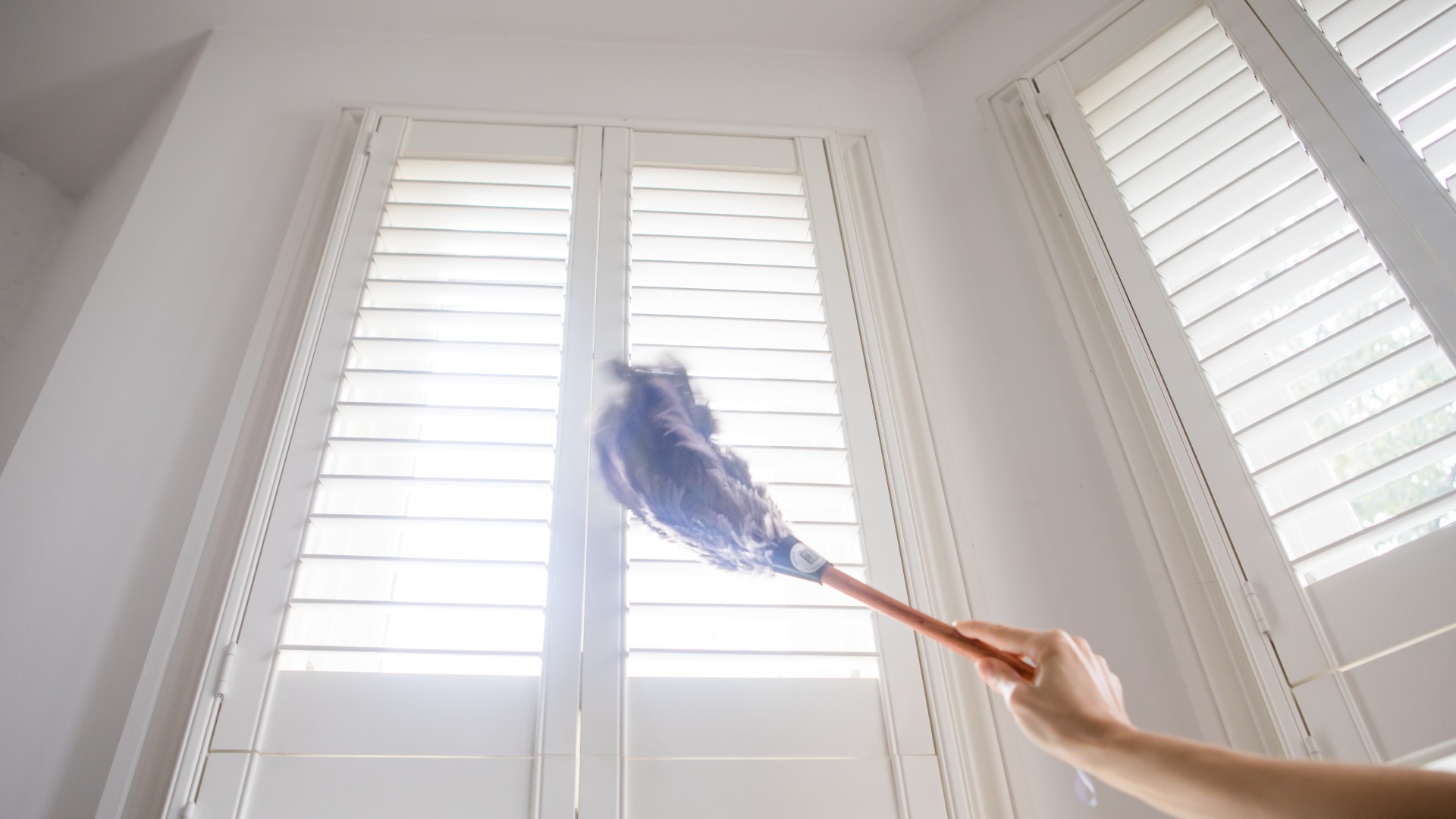
As with anything, keeping on top of dust is much harder when you don't have the right tools for the job. Delah Gomasi, CEO at MaidForYou says the most common mistake he comes across with the method in which people dust their own homes is thinking they can remove all dust with just a feather duster.
"Feather dusters are a great tool for removing dust in hard-to-reach places and delicate items but they're not the best tool for efficiently removing dust within a home at scale," says Delah. Instead, he recommends using a microfibre cloth and says you can use these on an extended handle, at Amazon, to wipe the dust from walls, floors, ceilings and cleaning skirting boards.
"They're much more efficient at picking up dust and other fine particles when compared with a feather duster," Delah continues. "You could feather dust all day and still not achieve the same result that someone using a microfibre cloth pad on an extension pole could achieve."
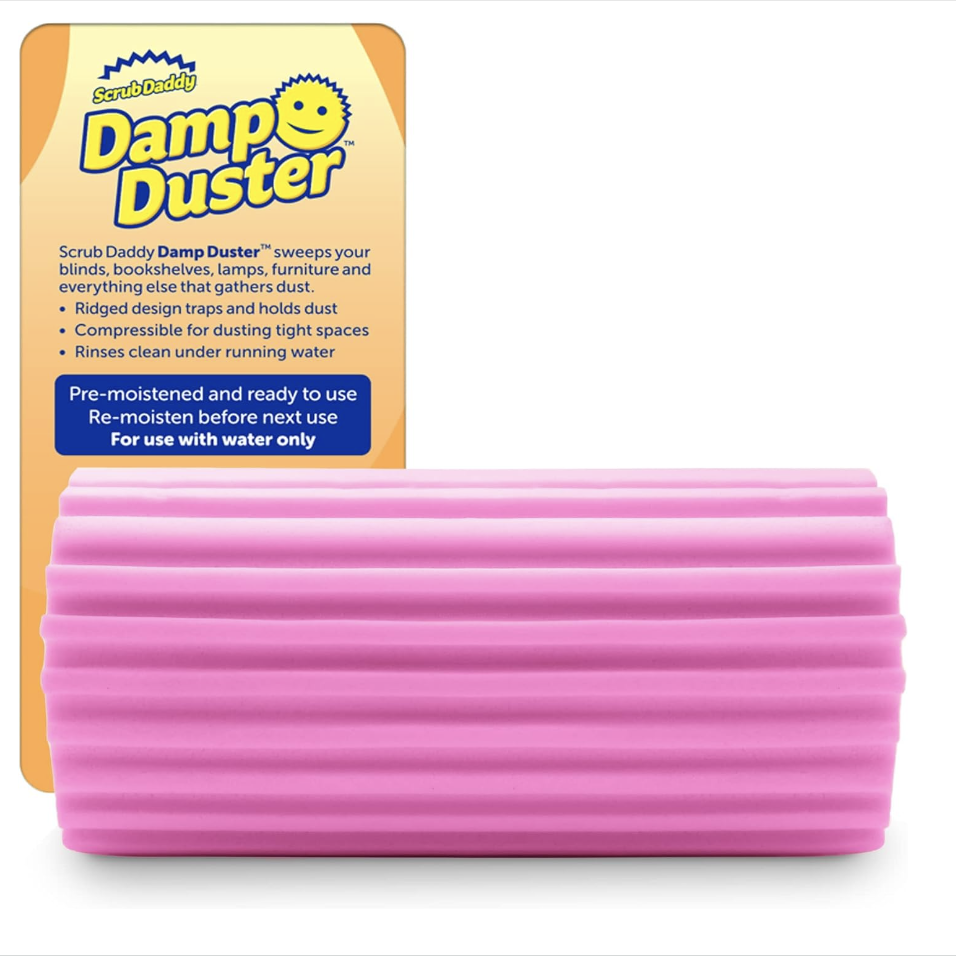
RRP: £4.49 | A slightly damp cloth or sponge is generally best, according to pro cleaners – this Scrub Daddy duster is well-reviewed on Amazon, removing dust from blinds, skirting boards, radiators and mirrors.
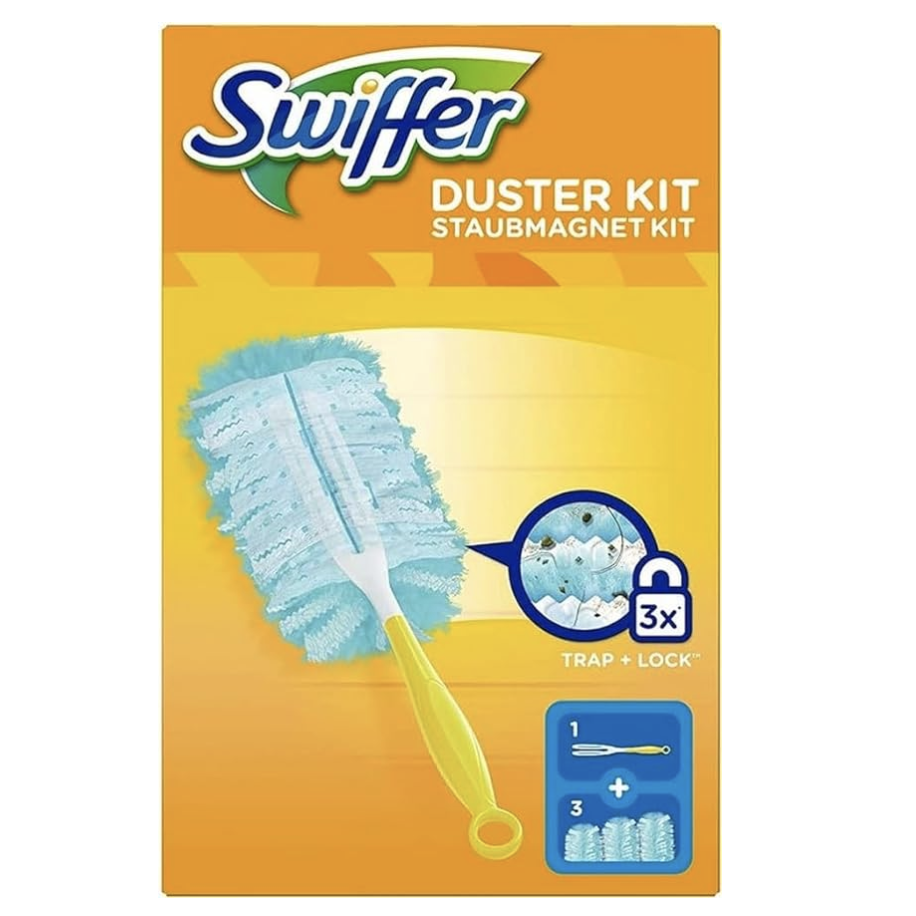
RRP: £7.90 | I love the Swiffer duster as it's really light and ideal for dusting delicate items. It tackles dust and cleans skirting boards effectively and I'm always shocked at how much dust it collects.
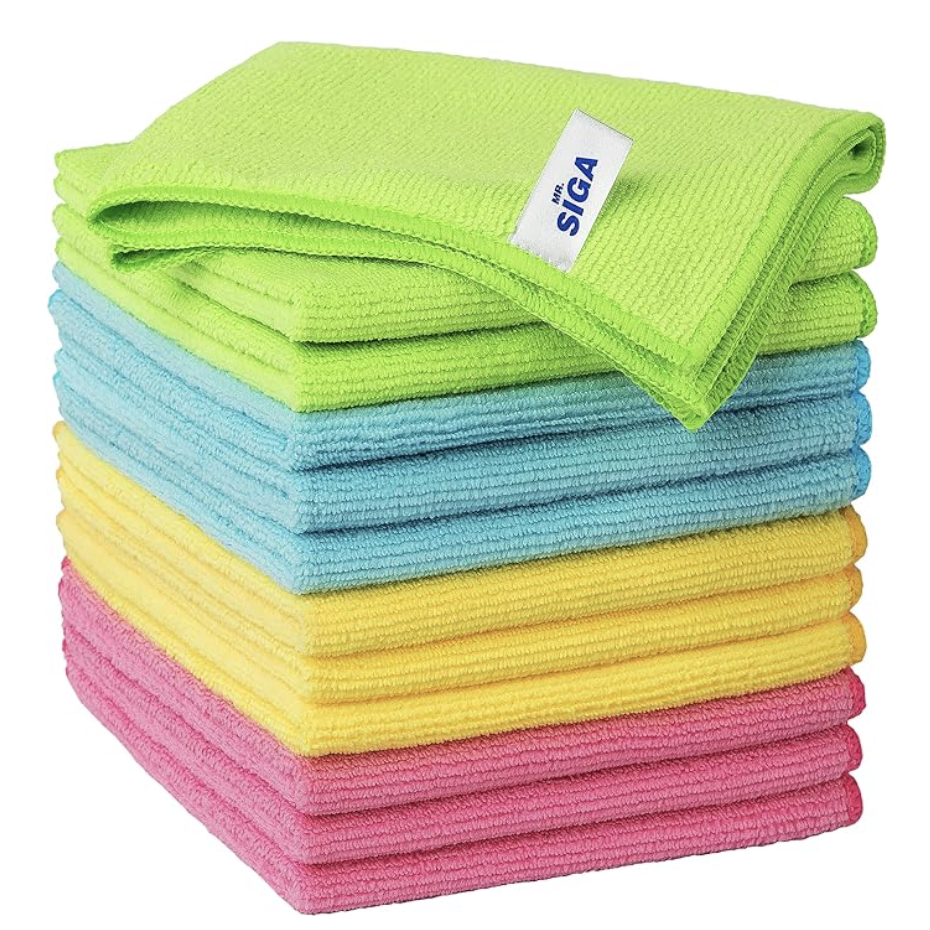
RRP: £15.99 | A damp, clean microfibre cloth removes dust and bacteria with no need for cleaning products and they're machine washable. It's a good idea to use different colours for different areas to avoid cross-contamination.
4. Applying the wrong technique
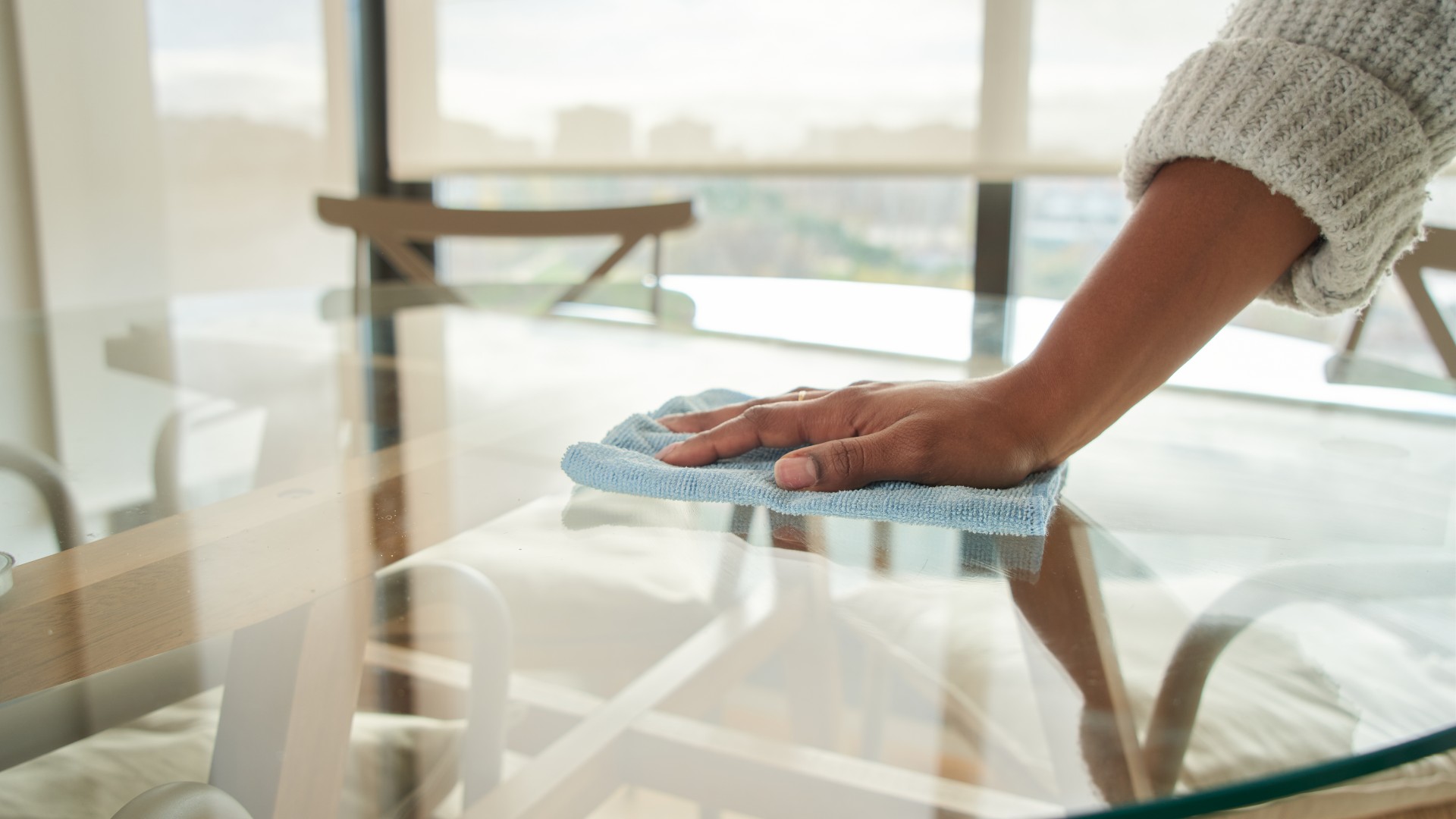
Honing your dusting technique will make the process more efficient and enjoyable. So, what do the pros suggest?
The experts at Ecover and Method say the "high before low" rule is the most effective way to avoid dust from travelling from room to room – a valuable lesson when unearthed when exploring common spring cleaning mistakes.
"Overhead fixtures like lighting and ceiling fans are prone to dust build-up over winter and don’t get cleaned as often – and when they do, the dirt and grime will sprinkle down to the floor and surfaces below them. Avoid creating more work for yourself by starting from the top and cleaning down in each room."
A damp cloth is generally best, too, according to mould and air quality expert Michael Rubino. He also recommends folding the cloth: "Use a slightly damp, folded microfiber cloth. Once the surface is slowly wiped off, fold the fabric into an unused portion before cleaning another surface."

Michael Rubino is a mold and air quality expert, environmental wellness advocate, and founder of HomeCleanse, a revolutionary company with the vision to end the worldwide health epidemic caused by poor air quality and toxic indoor environments. He is also president of Change the Air Foundation and Host of Never Been Sicker podcast.
5. Not turning the air purifier on
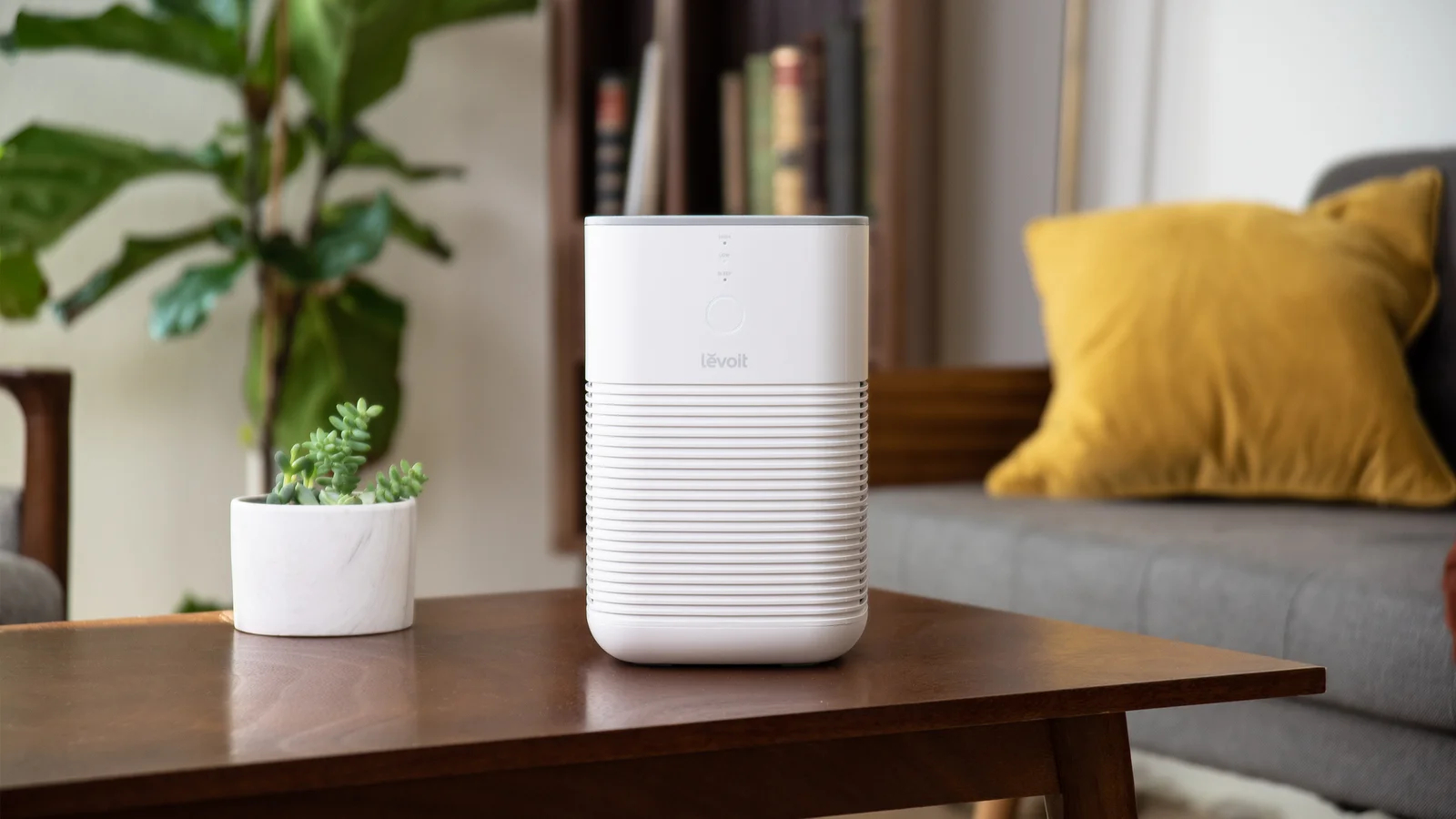
"One mistake is not turning the air purifier on while dusting," says Michael Rubino. "When moving around, dust particles will inevitably be disturbed and become airborne. Turning on the air purifier will help eliminate these particles so they don’t just resettle on surfaces throughout the room."
We can recommend this Meaco air purifier, which is rated best overall in our best air purifiers guide, and the model I use at home.
6. Neglecting those hidden spots

An 'out of sight, out of mind' approach to dusting could impact your home's air quality, says Michael Rubino. So remember to dust in the crevices when cleaning radiators (a thin, long duster from Amazon is a game changer).
"Any surface in a home can collect dust, no matter how small. If you forget to dust these surfaces, you’ll end up with a layer of grime," Michael says.
"Any time these surfaces are disturbed through handling or movement, particles will become airborne and settle on other surfaces throughout the room. These surfaces include doorframes, light fixtures, fan blades, tops of TVs, blinds, wall decor, baseboards, etc. Don’t forget to move large items like couches to get underneath them."
So especially when doing a deeper clean, perhaps when spring cleaning, don't forget the out-of-sight areas. For a step-by-step on cleaning blinds, you can head to our guide.
How can I prevent dust when vacuuming?
It's a good idea to empty your vacuum cleaner's bag or canister before it's full. "When the bag gets too full, its suction power decreases as there is less room for air to flow through," says Rhonda Wilson.
'The vacuum doesn't pick up dirt as well, and it may even overheat, risking durability and shortening its lifespan. The fix is simple here. Embrace the habit of checking and emptying the bag or canister when it's about halfway full.' Keep replacement vacuum bags, at Amazon, or a clean canister ready for when you need it.

Millie Hurst is a freelance writer and interior designer based in Sheffield, helping clients create homes that are characterful, curated, and highly functional. Interior design inspirations include Jake Arnold, Beata Heuman and Abigail Ahern. Her personal style is a 'liveable maximalism' with boho, nature-inspired designs.
She has seven years of experience in the world of digital journalism, most recently working as Head of Solved at Homes & Gardens, where she wrote and edited countless features on home organisation, decluttering and interior design. Before that, she was Senior Content Editor at Ideal Home.
-
 Prince George will start a new school this year and 'smart money' is on Kate and William choosing this one, says royal expert
Prince George will start a new school this year and 'smart money' is on Kate and William choosing this one, says royal expertPrince George only has just over a year left at Lambrook School and Emily Andrews believes there's a top contender for his next one.
By Emma Shacklock Published
-
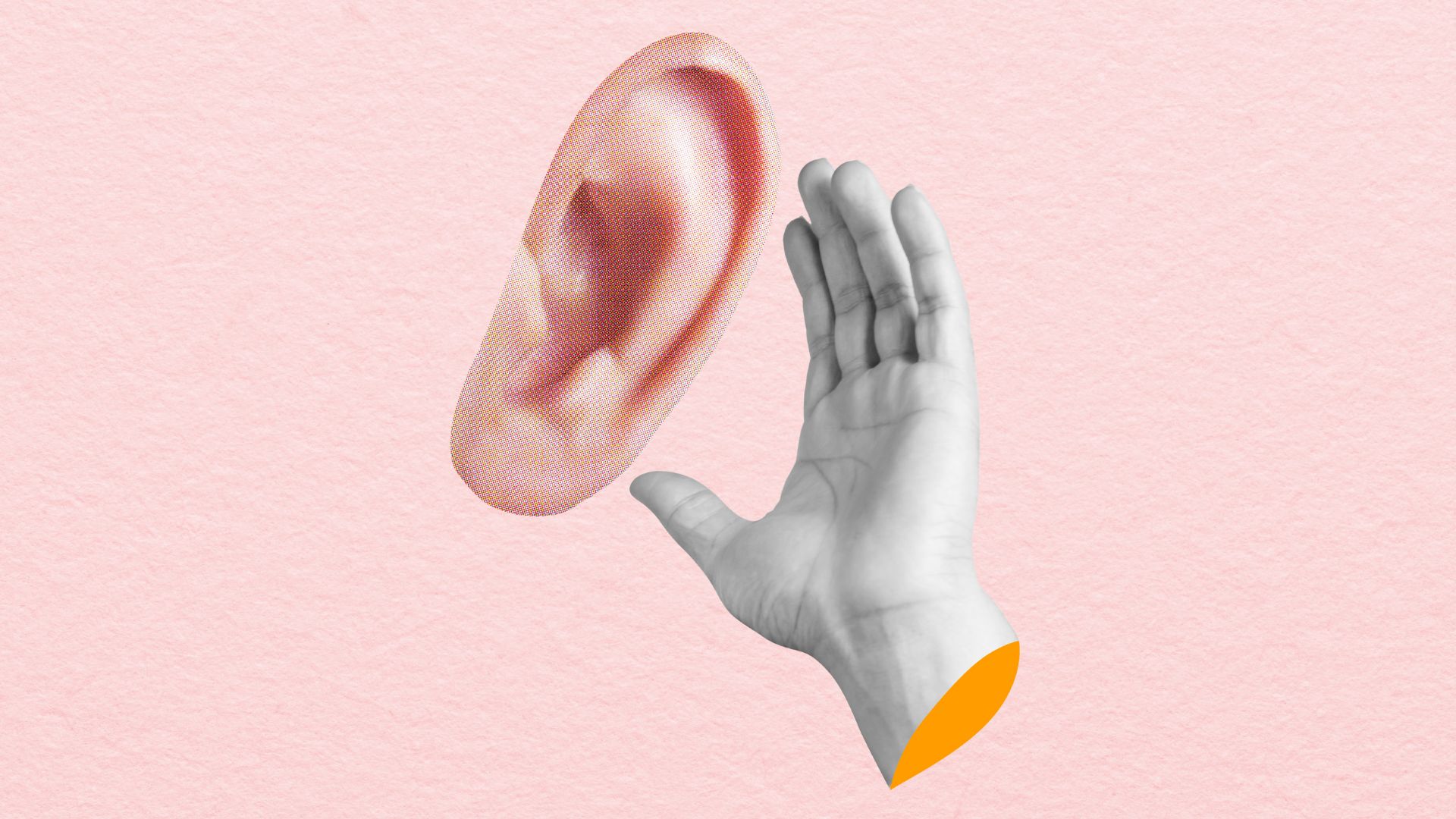 I started losing my hearing in my 40s - here's why you should never ignore the signs like I did
I started losing my hearing in my 40s - here's why you should never ignore the signs like I didNot only the elderly experience signs of hearing loss, contrary to popular belief
By Debra Waters Published